This New Zealand Designer's Textural Creations Bring This East London Showroom to Life — "Every Piece is Unique"
In "all in each", artist Grace Atkinson's textile works appear alongside iconic 20th-century designs in a poetic exploration of "perception, intimacy, function, and form"
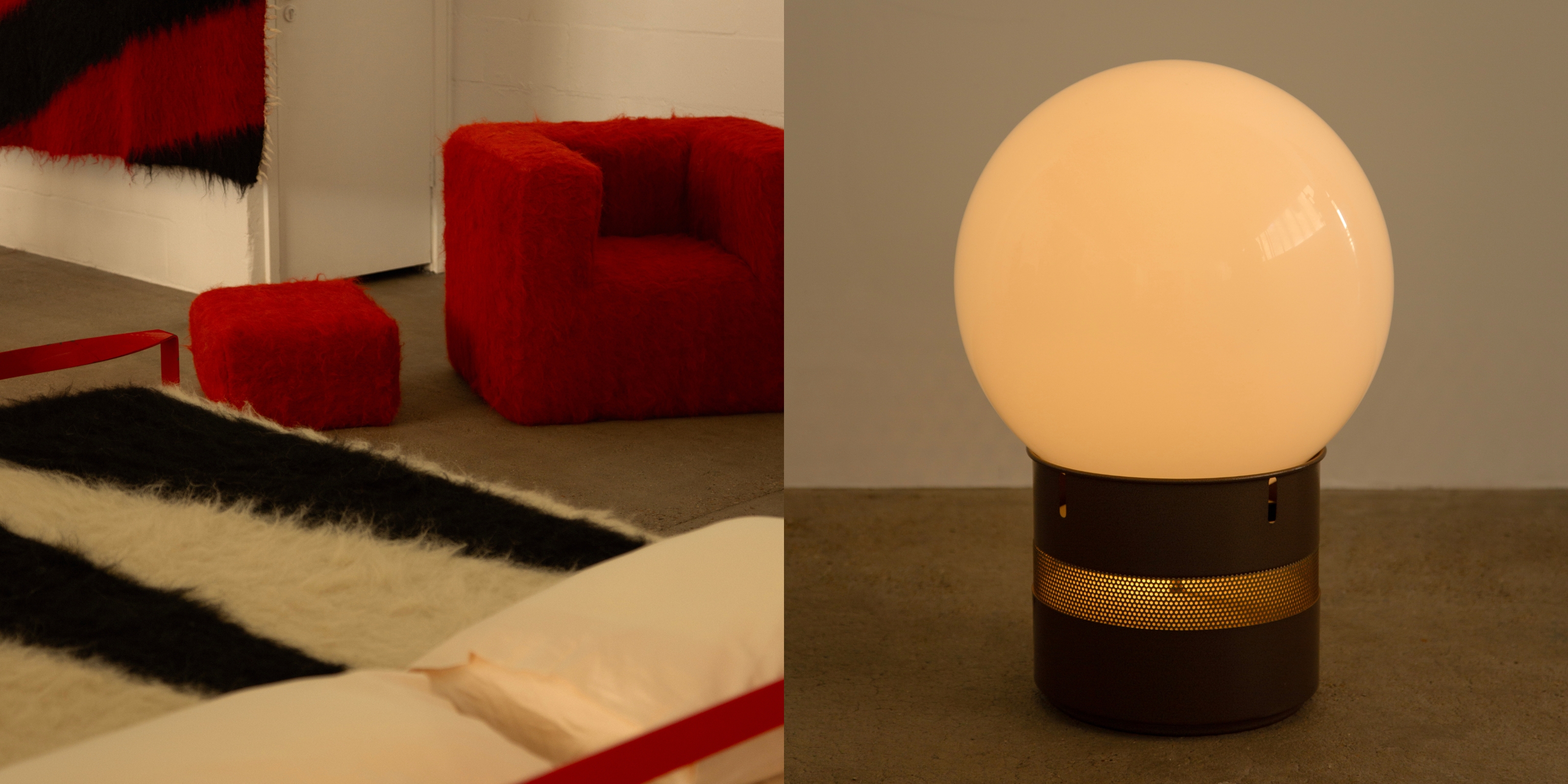
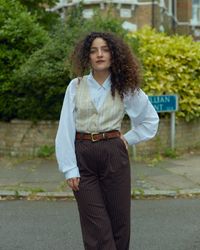
Can objects ever complete us, or rather, is it we that complete them? To what extent does the simple act of using something over and over again, give it meaning, life, or even a sense of purpose? What sort of stories are, or become, trapped in these items? And how can seemingly inanimate things still contribute to helping us grow closer to each other, discover new ways of being together, and engage with the spaces around us? These are only some of the questions that come to mind while observing New Zealand artist and designer Grace Atkinson's deeply textural, abstract textile compositions in all in each — one of the best design exhibitions to visit in London right now.
Open through May 18 at Spazio Leone — the multifunctional platform set up by Italian vintage furniture dealer Gennaro Leone in support of the creative talents of yesterday, today, and tomorrow — the presentation unfolds as a dialogue between Atkinson's works and iconic 20th-century designs from the showroom's ever-changing collection.
Hanging on the gallery's white-washed brick walls, lying atop minimal beds, or otherwise bringing a touch of warmth to the location's bare cement floors, the artist's bold woolen creations not only blend seamlessly with the spirited archival pieces interspersed in the show — including contributions from the likes of Gae Aulenti, Arnaud Bazille, and Pietro Cascella — but spotlighted side by side, they immerse the viewer in a gently soothing dimension of their own.
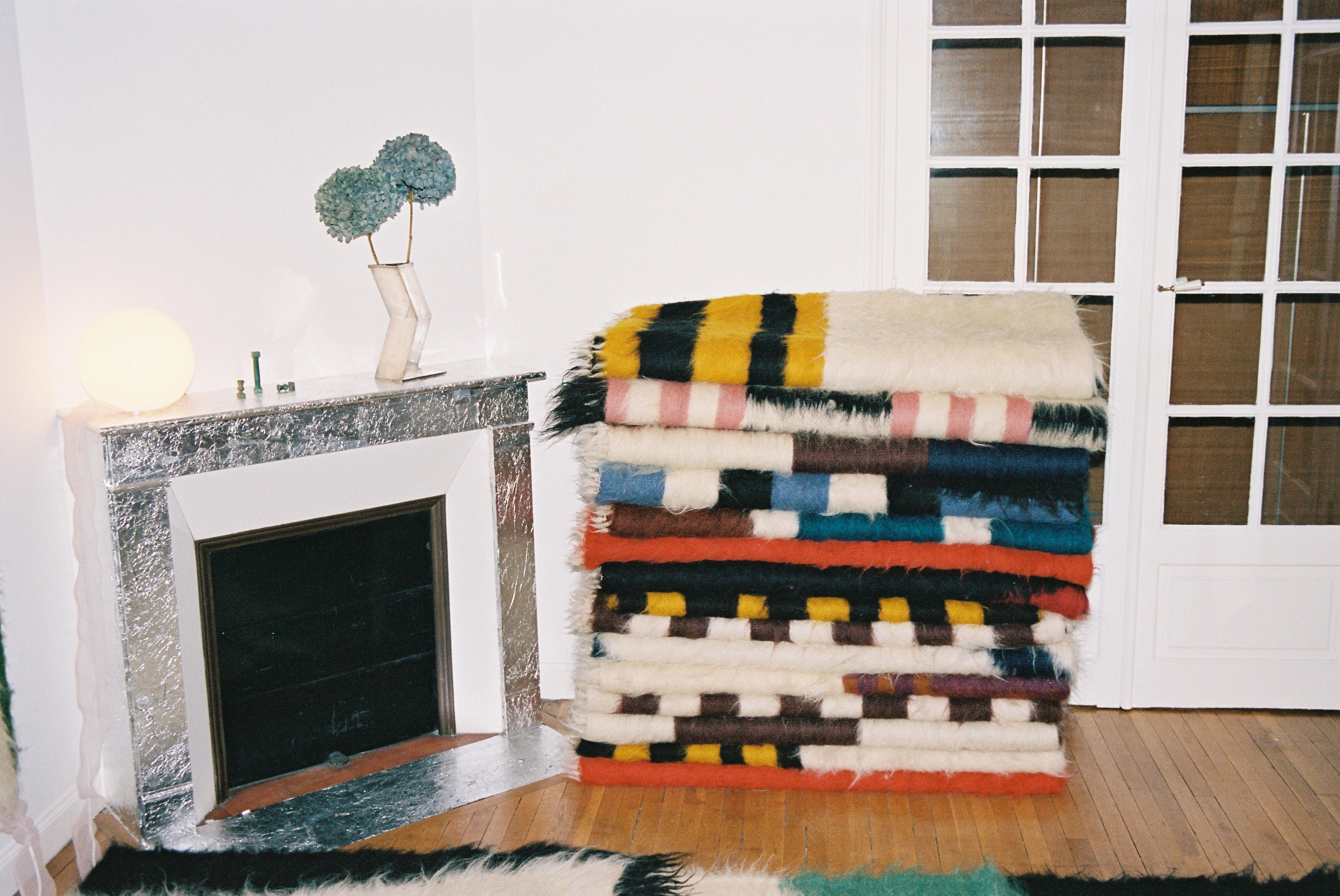
Grace Atkinson's animated textile creations, as seen in the artist's home.
Based in Paris, in her practice, Atkinson embraces ancient craft techniques she perfects through long-term collaborations with artisans from a variety of countries. It is an artistic approach that allows her to unlock the potential for storytelling and emotional resonance that lies in textiles — a medium whose origins stretch back to the dawn of civilization, and whose pivotal role in the advancement of humankind is undebatable.
The artworks gathered in all in each, for example, were handcrafted "using a traditional technique developed in the 14th century by the Hutsuls; highlanders who have inhabited the Carpathian mountains of Ukraine for centuries, intrinsically bound to the earth through ancient myth, mysticism, and folklore," she explains. "Believed to be samoridny (self-born), and revered for their healing and medicinal properties, these magical pieces are created in direct synergy with nature."
At first glance, Atkinson's patchworky exploration of surface, texture, and scale instinctively reminds me of the enigmatic — albeit divisive — canvases of American abstract painter Mark Rothko; raw swathes of color that raise questions and foster introspection rather than providing straightforward answers. If the absence of any figurative details makes them open-ended and, therefore, universal, the manual labor that went into them is what makes these designs truly timeless.
Composed of virgin wool from the southwestern Ukrainian region, each piece is woven by hand on a wooden loom before being dipped in the mountain river waters to felt the fibers. Let out to dry in the sunshine, "they are hand-brushed on one side to create the soft, fleecy texture. Heavy enough to be a rug, and light enough to be a blanket", these objects speak to our primordial desire for comfort, connection, and touch.
The Livingetc newsletters are your inside source for what’s shaping interiors now - and what’s next. Discover trend forecasts, smart style ideas, and curated shopping inspiration that brings design to life. Subscribe today and stay ahead of the curve.
How Did the Idea for "all in each" Come About?
Gennaro Leone: I came across Grace's work while visiting NYC a few years ago. At the time, I had just started getting into textiles, and that April, we put on an exhibition of work by Mariana Chkonia, an artist from Tbilisi. Building on that, we wanted to explore more of the textile world with a similar sensibility to Mariana's work. Very spontaneously, in November 2024, I reached out to Grace about collaborating on a show with us in London.
From the beginning, it's been a truly enjoyable process. Getting to know such a talented artist, whom I can now call a friend, was amazing. With access to a vast inventory of collectible pieces, Grace and I went through the list and selected the ones we felt would best complement her work. We even printed images of these pieces and placed them next to the textiles to see how they would interact.
What's Your Favorite Piece from the Exhibition?
Gennaro: I keep coming back to Furtiva Lagrima p.42, especially because of how it sits with Il Colonnato red Persian travertine table by Mario Bellini. There's something about the pairing that immediately brings to mind a Milanese apartment in the 1950s: elegant but lived-in, with a quiet intensity. It reflects the spirit of the show: letting materials, forms, and histories speak to each other in subtle, unexpected ways.
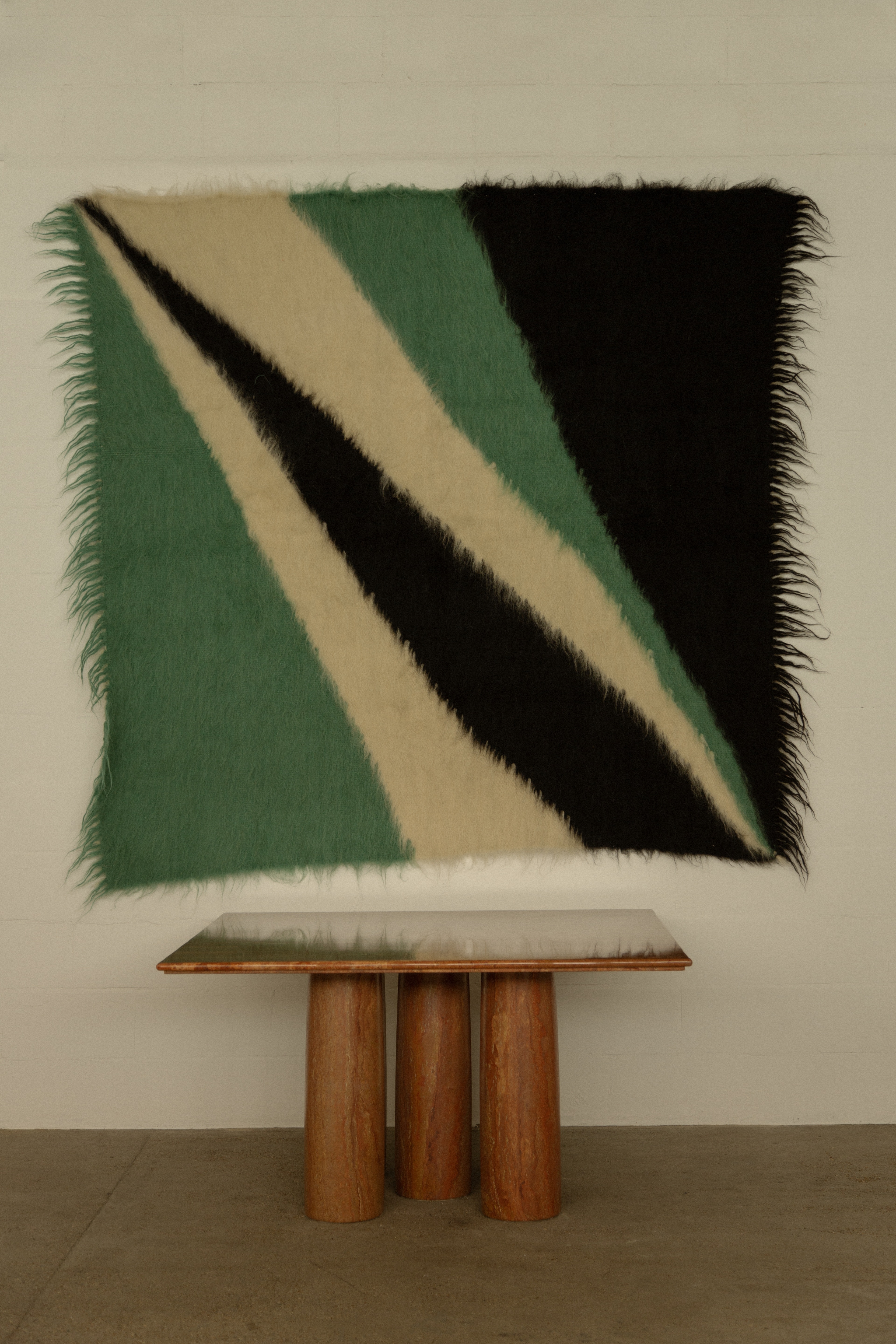
Grace Atkinson's Furtiva Lagrima p.42, showcased alongside Mario Bellini's Il Colonnato table in red Persian travertine.
Where Does the Title "all in each" Stem From?
Grace Atkinson: all in each is a phrase lifted from Knots by Scottish psychiatrist R.D. Laing, a book that has long resonated with me. In his poetic dialogues, Laing explores the complexities of human relationships, how we loop ourselves and others into patterns of thought and feeling. That idea of entanglement felt like a perfect container for what I was exploring in this show: perception, intimacy, function, and form.
I first used the phrase as the title for a piece of furniture in the exhibition, a modular chair and ottoman set that fits together to create a third sculptural form. It became a way of thinking about how individual elements can hold multiple possibilities when brought into relation, which is, in essence, how I think about interior spaces.
Tell Us About the Collaboration Behind These Pieces.
Grace: I've been working with this group of Ukrainian artisans for the past seven years, approaching the relationship with a slow, deliberate pace to fully understand the nuances of the technique. What drew me in was the material and visual language, and I've deepened my understanding of the technique through ongoing dialogue and experimentation, allowing me to work with it meaningfully.
The weaving technique they use is specific to the Carpathian region, carrying a rich history of local knowledge shaped by the environment, community, and tradition. I hold a deep appreciation for how closely the process is connected to place, the regional wool, the washing in the river, the drying in the sun, and the reliance on, and connection to, the environment.
Since the Russian invasion of Ukraine in 2022, the challenges surrounding production have grown significantly. I admire the resilience of the people I work with and feel privileged to continue collaborating with them.

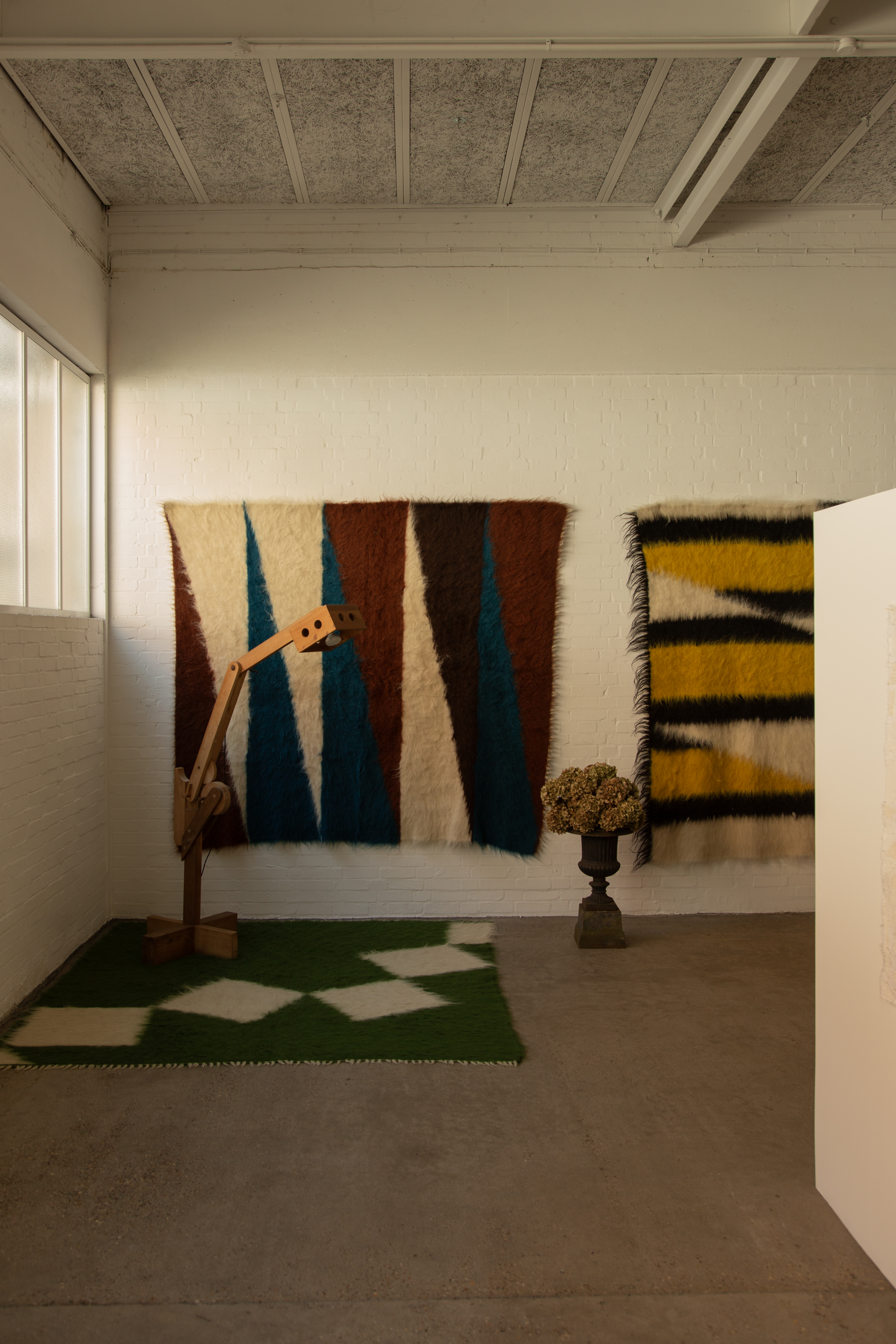
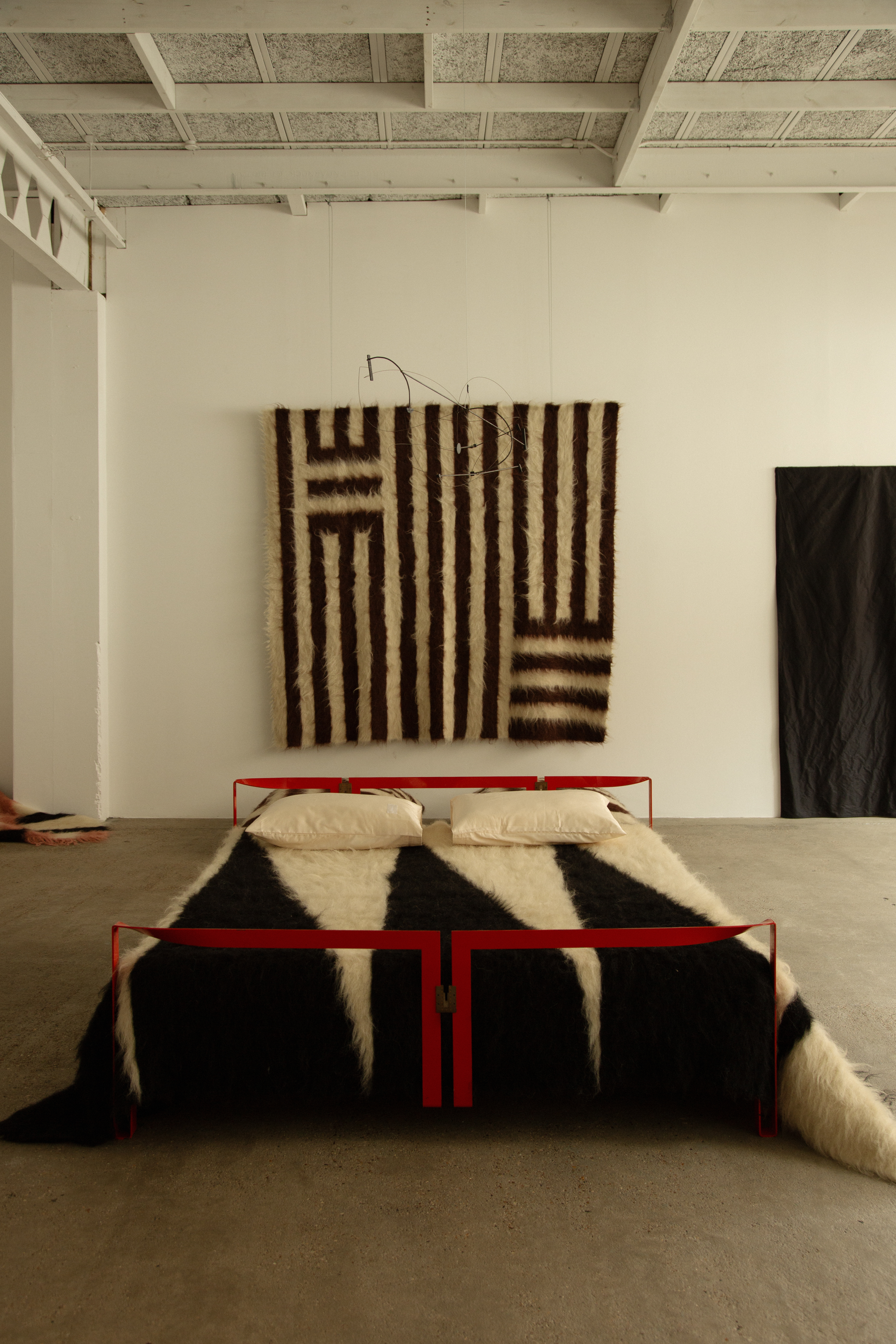
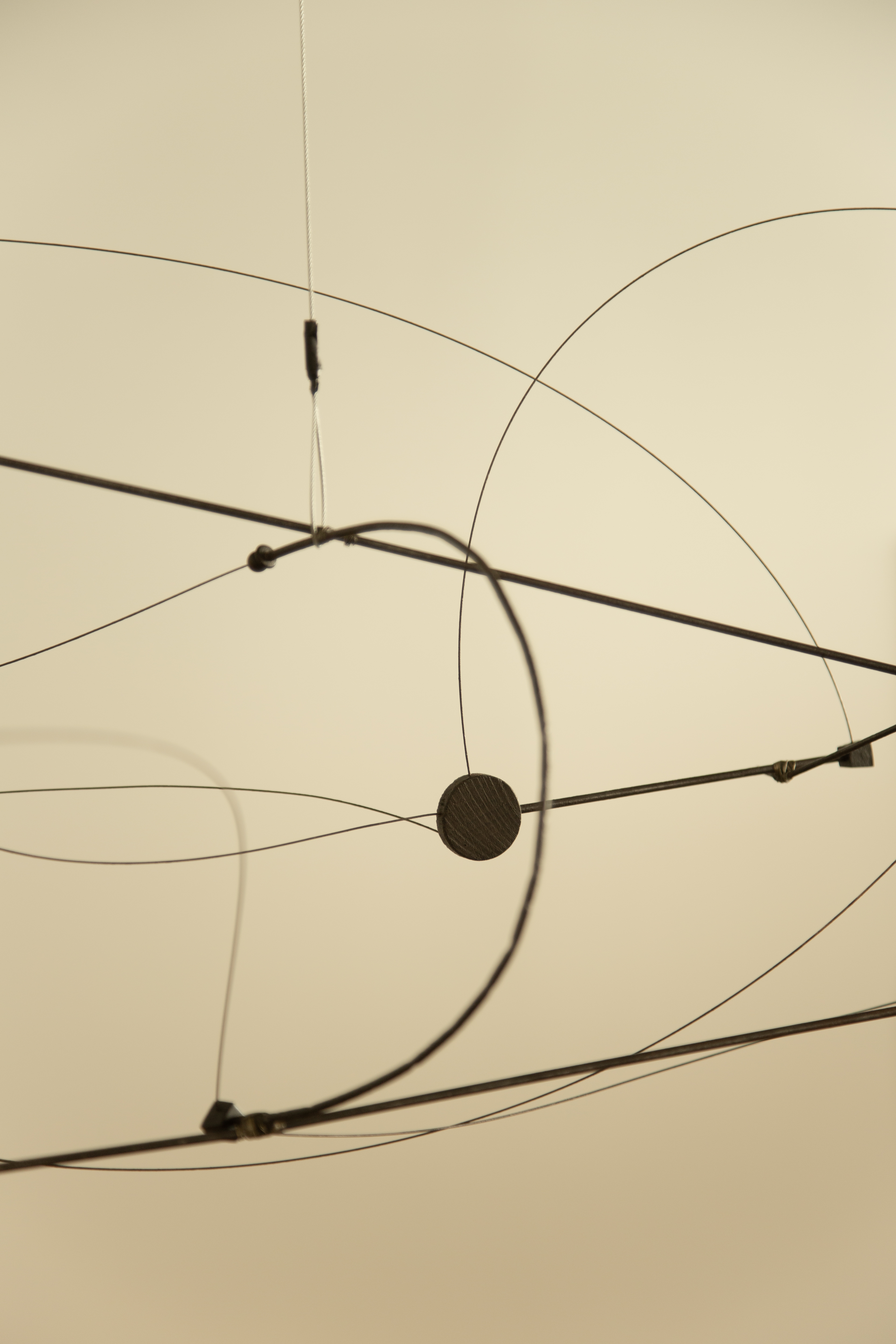
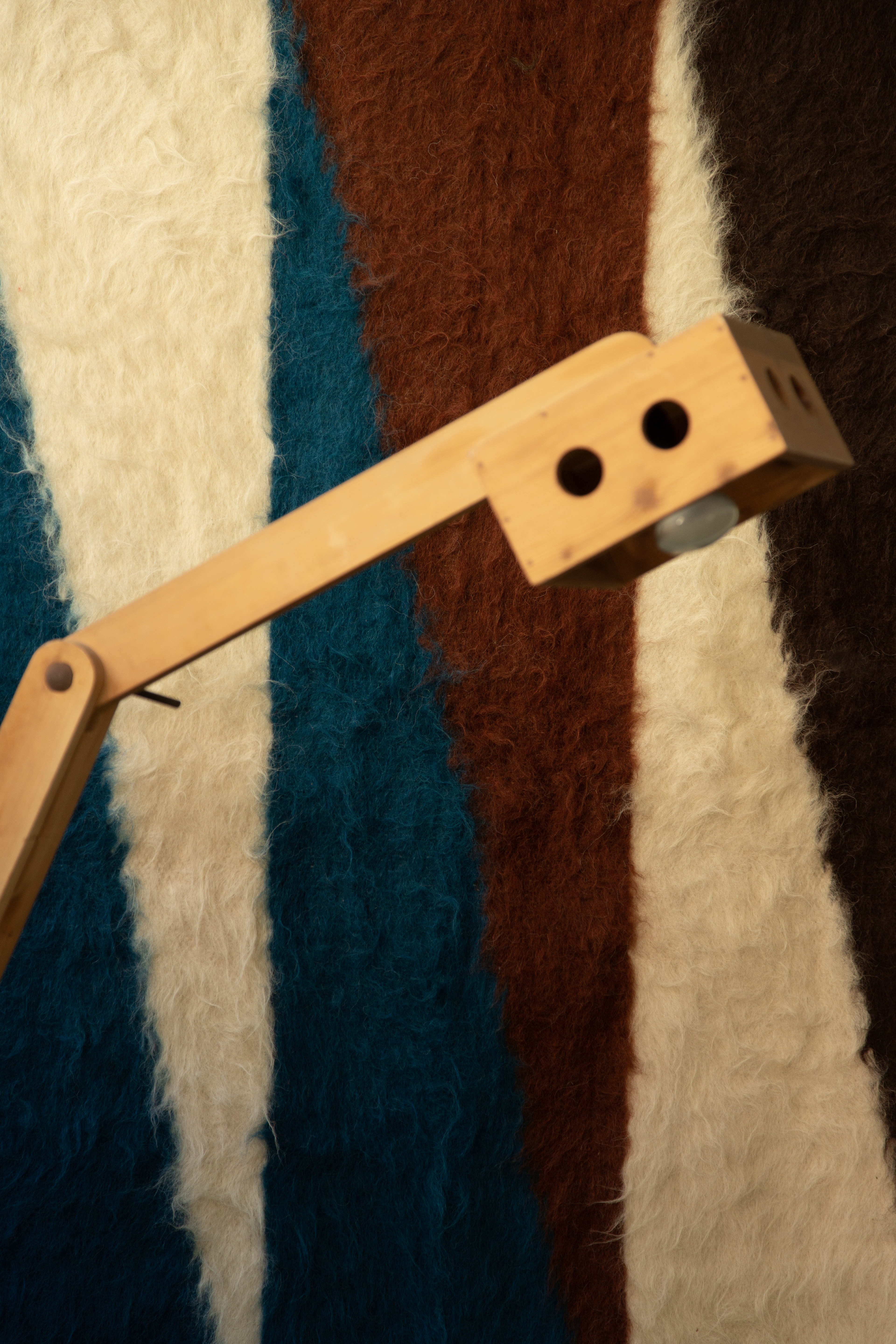
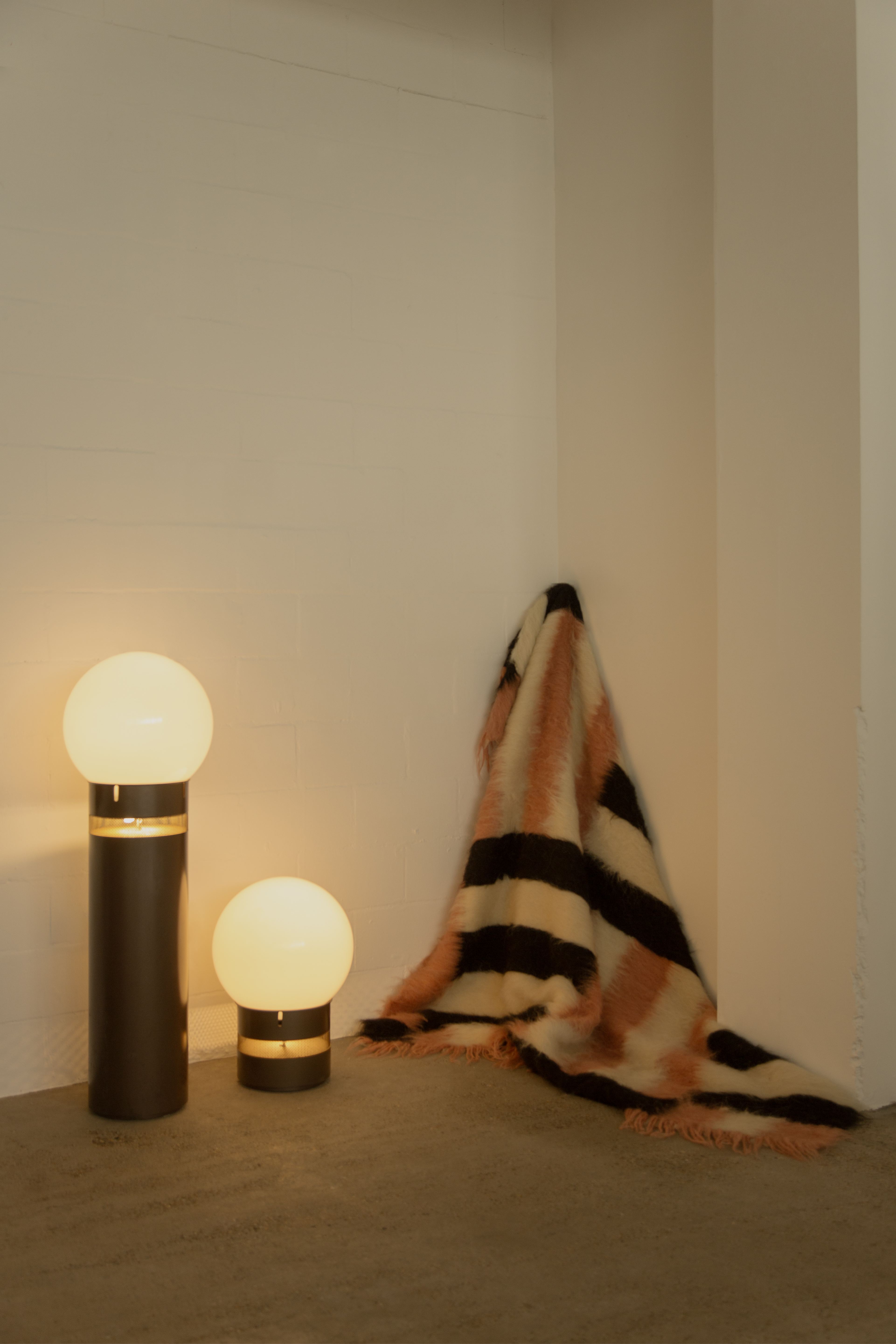
How Did You Land on This Color Palette?
Grace: Each batch of wool that is dyed has natural variations depending on the season, the characteristics of the wool, and the weather. There's always an element of unpredictability, which I've learned to work with rather than control. Sometimes I keep the palette simple to highlight the motif, other times I push more complex combinations that create visual tension or a sense of movement.
Every piece is unique, so there's always an element of trusting the alchemy of all these factors coming together. From the beginning, Gen and I had an ongoing exchange about the pieces he was curating and how they could be in dialogue with my work, which I found creatively generative. Tui, sleeping, for example, was designed specifically for Afra & Tobia Scarpa's Vanessa Bed, responding directly to the piece's presence in the space.
What Was It Like to See It All Come Together?
Gennaro: This might be the best show we've done at Spazio Leone so far. Grace's pieces have entered into such a natural dialogue with our collectables, and together they've created a really special room in Hackney. We've had a great response from visitors so far, with many more expected before the show closes on May 18.
all in each is open at Spazio Leone through May 18. Plan your visit
If you'll be New York-based instead this weekend, we have an essential edit of everything you should see, do, and know during New York Design Week 2025.
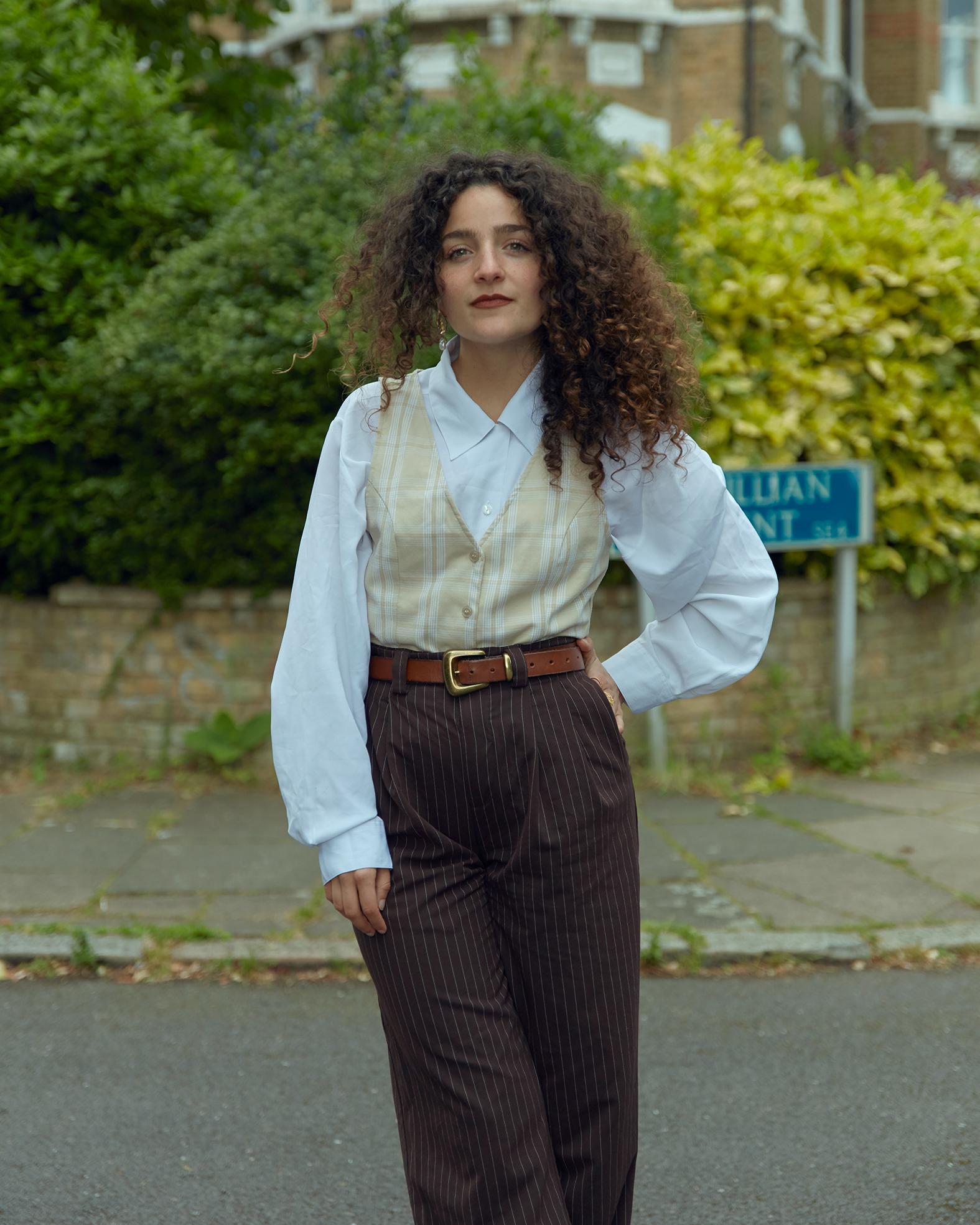
Gilda Bruno is Livingetc's Lifestyle Editor. Before joining the team, she worked as an Editorial Assistant on the print edition of AnOther Magazine and as a freelance Sub-Editor on the Life & Arts desk of the Financial Times. Between 2020 and today, Gilda's arts and culture writing has appeared in a number of books and publications including Apartamento’s Liguria: Recipes & Wanderings Along the Italian Riviera, Sam Wright’s debut monograph The City of the Sun, The British Journal of Photography, DAZED, Document Journal, Elephant, The Face, Family Style, Foam, Il Giornale dell’Arte, HUCK, Hunger, i-D, PAPER, Re-Edition, VICE, Vogue Italia, and WePresent.